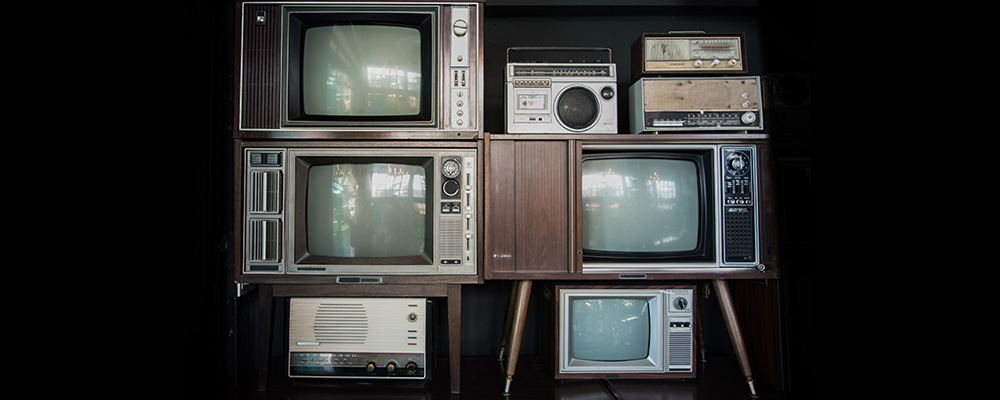Carol Thompson, President at Ad Cetera, Inc. (see DallasAdAgency.com and MediaBuyerDallas.com) has been in advertising for almost three decades. During those years, she’s witnessed first-hand how dramatically technology has redefined the media industry and impacted her efforts, as well as her clients’ marketing and advertising strategies.
In the 1940s, 50s and 60s, radio and television networks struggled to become viable options in the ad industry. As a result, newspaper advertising remained “king” – especially on regional and local levels. I imagine in those days, creating and booking newspaper ads was very stressful and time-consuming, especially given the limited technology available.
Obviously, we weren’t around during that era, but even with the advancements made in the 80s and 90s, creating, producing and delivering newspaper and other print ads literally required “jumping through hoops.” Like designing, cutting and pasting fonts and artwork on boards. That artwork then had to be made “camera-ready” and sent to various newspapers, magazines and other publications.
Speaking of the 80s and 90s, let’s talk about TV and radio. Shooting, editing and producing television commercials took at least three times longer than it does today (which could be an understatement). Then “beta dubs” had to be made and hand-delivered to the stations. Radio ads also took much longer to complete. After recording and producing spots, we’d have to deliver “reel-to-reel dubs” to the stations. Because tape is fragile, those dubs would often become corrupted, so we always delivered backups just in case. These processes were tedious, to say the least. With the advent of computers, the Internet and email, times certainly have changed for the better! Now, we can send any type of ad with just a few keystrokes.
Although technology has made our lives a whole lot easier in many respects, the media landscape has grown far more complex. On a daily basis, consumers are bombarded with advertising from every imaginable source. In fact, the industry has become so diverse, efficient and effective planning and buying requires constant research, in-depth knowledge and expertise in all available forms of media, both traditional and digital.
Even with the changing times, broadcast television, satellite and cable advertising can still be extremely effective, and often receive the lion’s share of many advertising campaigns. As television is a “reach” medium, it’s critical to have the right frequency and budget. That means thoroughly evaluating and booking the right dayparts, programming and stations that will maximize ROI. Bookends (:15 second ads that run at the beginning and end of a commercial break) can be highly effective for both enhancing branding and conveying specific sales messages – especially for service businesses. Additionally, standard :30 second spots can work quite well for retail branding and sales promotions, or for rolling out new products. And:60 second or longer spots and :30 minute infomercials are primarily used for direct response advertising. (Think anti-aging products, patented new cooking utensils, unique “fixer-upper tools,” or other products only available online or by calling an 800 number.)
Also in today’s world, radio is still a cost-effective and highly-efficient advertising medium. The beauty of radio ads is that just like books, they allow for “theater of the mind.” One can envision any creative scenario and make it literally come to life through the airwaves. Radio enables us to target consumers based not only on their ages and incomes, but also their lifestyles. That’s not to say one can know all purchasing habits of consumers because of their listening habits. However, with all the demographic reports now available to agencies, we can paint a fairly detailed portrait of who’s listening to what stations. Radio has become so diverse and fragmented, there’s virtually a station for every lifestyle. We strategically plan each station buy on creative content of commercials, format, share of market, length of ads, talent endorsements, sponsorships, promotions and more.
All that said, the more recent developments of digital and social media and other technologies have completely transformed the advertising industry. Digital strategies should be included in every advertising campaign to reinforce traditional media messages, or to reach completely different audiences. Different forms of digital advertising are so advanced, they literally “follow” targeted consumers as they’re on their phones, tablets, desktop computers, and even game systems.
Examples of digital and social media advertising include query ads, YouTube video ads, social media ads (Facebook, Instagram, etc.), email blasts, e-newsletters, short video animation, cross platform strategies, mobile ads, streaming radio ads, banners, text messaging and much more.
Thanks to algorithms developed by Facebook and Google, we now have the ability to fine-tune our digital strategies with in-newsfeed ads and custom audience targeting, including programmatic ad placement and direct publisher preferred placement. These new technologies have totally revolutionized the way we reach consumers.
Although today’s advertising landscape is constantly evolving, we always stay on the cutting edge of technology. All branding, creative strategies, media planning and buying is highly-targeted to the right audience, while always keeping our clients’ budgets top-of-mind. With proven tracking formulas and performance-based systems in place, we’re able to determine what strategies provide our clients with the largest return on their investment. We view the client/agency relationship as a long-term partnership. For any partnership to be successful, one must not only rise to the occasion, but “exceed the need.”
Carol Thompson is the President & Chief Media Buyer at Ad, Cetera Inc. (Dallas Advertising Agency). Follow Adcetera at dallasadagency.com, on Facebook at facebook.com/adceterainc, and Twitter @adceterainc.

